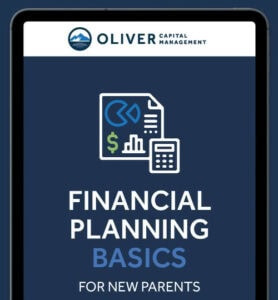Planning for retirement involves more than just saving and investing – it also involves creating a strategy to manage taxes on your retirement income.
Proactive tax planning strategies are essential for retirees to maximize their income and keep more of their hard-earned savings. By implementing a thoughtful strategy you can navigate the complexities of taxing retirement income effectively aiming to ensure your financial independence.
Here are five quintessential, actionable tax planning strategies to help retirees minimize taxes and make the most of their savings.
Strategy 1: Use a Roth Conversion to Reduce Future Taxes
One of the best ways to maximize your tax planning strategies is a Roth conversion. A Roth conversion involves transferring funds from a traditional retirement account, like a 401(k) or IRA, into a Roth IRA. While this strategy incurs taxes during the conversion year, the long-term benefits can be substantial:
- Tax-Free Withdrawals: Once the funds are in a Roth IRA, they grow tax-free, and qualified withdrawals are not taxed.
- Ideal Timing: Roth conversions are especially beneficial when you’re in a lower tax bracket, such as during early retirement.
- Gradual Conversion: Avoid higher tax brackets by converting smaller amounts over several years.
By converting to a Roth IRA, retirees could reduce future taxable income and enjoy greater flexibility in managing taxes during retirement.
Traditional IRA account owners have considerations to make before performing a Roth IRA conversion. These primarily include income tax consequences on the converted amount in the year of conversion, withdrawal limitations from a Roth IRA, and income limitations for future contributions to a Roth IRA. In addition, if you are required to take a required minimum distribution (RMD) in the year you convert, you must do so before converting to a Roth IRA.
Strategy 2: Take Advantage of Tax-Efficient Withdrawal Strategies
How – and when – you withdraw from your various accounts matters significantly when it comes to reducing taxes. A common tax-efficient withdrawal approach includes:
- Taxable Accounts First: Use funds from brokerage accounts to minimize capital gains taxes while allowing tax-advantaged accounts to grow.
- Tax-Deferred Accounts Next: Withdraw from traditional IRAs or 401(k)s when needed but be mindful of staying within your tax bracket.
- Roth Accounts Last: Reserve Roth IRA withdrawals for later, as they are tax-free and offer maximum flexibility.
By carefully planning your withdrawals, you could reduce the likelihood of being pushed into a higher tax bracket and preserve more of your savings.
Strategy 3: Harvest Capital Gains and Losses
Strategically managing investment gains and losses can reduce taxes as part of a greater tax planning strategy for retirement. Here’s how:
- Harvesting Gains: Sell investments with long-term capital gains during lower-income years to take advantage of lower tax rates.
- Offsetting Losses: Sell underperforming investments to offset gains, reducing overall taxable income.
- Long-Term Outlook: Remember, long-term gains (held for over a year) are taxed at lower rates than short-term gains.
This strategy means your investment portfolio remains optimized for tax efficiency, all while meeting your financial goals.
Strategy 4: Consider Qualified Charitable Distributions (QCDs)
For retirees aged 73 or older, donating to charity through Qualified Charitable
Distributions (QCDs) can be a powerful tax-saving tool.
- What Are QCDs?: These are donations made directly from an IRA to a qualified charity, allowing you to satisfy Required Minimum Distributions (RMDs) without increasing your taxable income.
- Tax Benefits: QCDs reduce taxable income and can lower your overall tax liability while supporting causes you care about.
This strategy is a win-win for all parties, combining philanthropic goals with tax efficiency.
Strategy 5: Plan for Required Minimum Distributions (RMDs)
RMDs, which begin at age 73 (as of 2024), require retirees to withdraw a certain percentage of tax-deferred account balances annually. Failure to take Required Minimum Distributions (RMDs) on time can result in a penalty of 25% of the RMD amount, reduced to 10% if corrected within two years.
- Tax Impact: RMDs are included in taxable income and can push retirees into higher tax brackets.
- Early Withdrawals: Consider taking smaller withdrawals earlier in retirement to spread the tax burden over several years.
- Charitable Solutions: Use QCDs to offset the taxable impact of RMDs.
Proactive planning around RMDs ensures compliance while reducing unnecessary tax burdens.
Conclusion
Effective tax planning is key to maximizing retirement income and preserving your savings for anyone seeking out a sound financial future. By implementing strategies like Roth conversions, tax-efficient withdrawals, and QCDs, you can significantly reduce the impact of taxes on your retirement.
Ready to take the next step? John Conte of Oliver Capital Management can help provide guidance – from aiming to developing a customized strategy that aligns with your financial goals to secure retirement.
–
For Educational Purposes Only – Not to be relied upon as financial, tax, or legal advice.
7414368RG_Dec26
